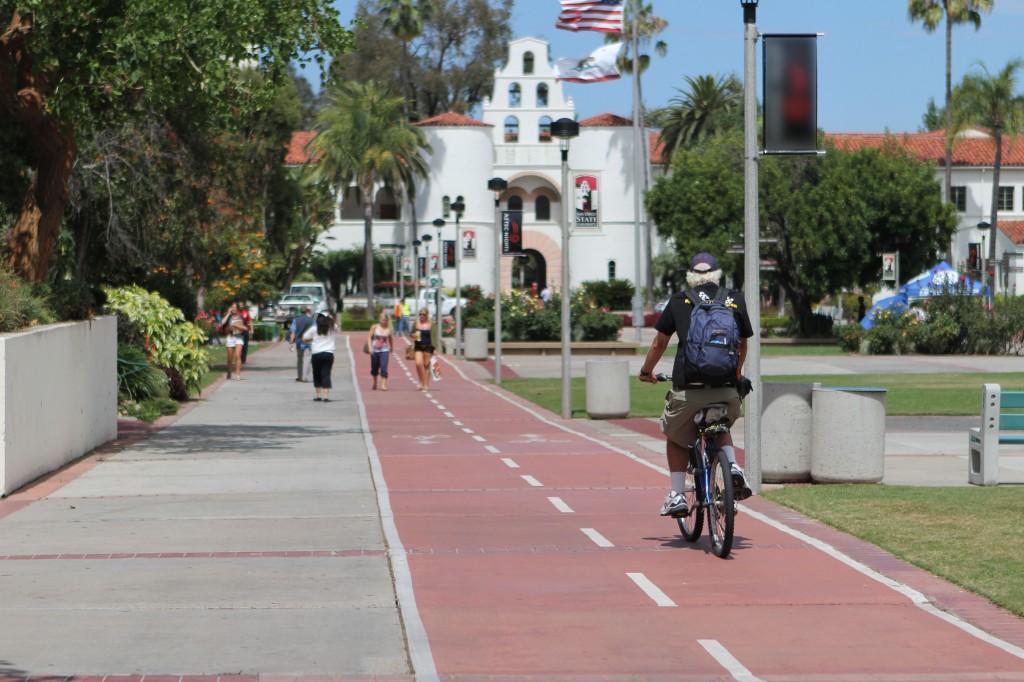Two years after bicyclists were allowed to venture into the center of campus and a bike lane was established on Campanile Walkway, students still have concerns.
Some say pedestrian safety has taken a hit and that they feel uncomfortable walking around campus, while others say a student’s choice of transportation is his or her right, whether it’s two-wheeled or four.
This semester, San Diego State University Police Department officers have responded to 10 accidents involving motorless vehicles. Seven resulted in serious head injuries that required medical transportation.
The Associated Students Student Support Commission hosted an open forum Nov. 21 at Scripps Cottage to get students’ perspectives on the issue.
Many of the 20 or so students attending favored accommodation for bicyclists. They reasoned that a complete ban would only be ignored because of the high demand for alternate transportation.
“Just imagine if there wasn’t a bike lane,” A.S. Campus Community Commission representative Hassan Abdinur said. “Everybody would just do their own thing and it would be chaos. So the bike lane is not perfect, but it’s some idea of organization and order on campus.”
Students’ suggestions included education on policies at new-student orientation, making the bike lanes more visible with a brighter color scheme, or simply spreading awareness of the old adage, “Look both ways before you cross.”
“It sounds like a common theme is there’s a lack of awareness by students on campus and there’s just a need to educate our campus and create more of a culture suitable for bicycles and maybe skateboarders,” A.S. Vice President of University Affairs Morgan Chan said.
Student Advising Board Chair and communications senior, Kelvin Crosby, said disabled students were not considered when the bike lane was put in place.
He referred to the four-way intersection formed by the bike lanes along Aztec Walk and Campanile. Students with disabilities must navigate this intersection going west to the Calpulli Center where Student Disability Services is housed.
Crosby, who is blind and wears hearing aids, said that the odd placement of truncated domes—the bumpy ground surfaces used to warn visually impaired persons of dangerous crossings—creates confusion. He said they don’t tell him where the true danger lies because the wider strips of domes do not abut the bike lane along the far-west edge of Campanile, but rather border the pedestrian path next to it.
University architect Robert Schulz said that all of the 8-foot-wide path should be considered potentially dangerous by a visually impaired person attempting to cross, and that the domes as they are placed provide fair indication of that danger.
“We believe that’s actually compliant and legal and not an unsafe condition,” Schulz said.
Schulz added that he does not want to diminish Crosby’s concerns, but that zoning codes preclude the implementation of his suggestions.
A plan approved by the University Senate two years ago to add skateboards to the mix could contribute to the complications. The plan, which needs approval by the California State University Chancellor’s Office and President Elliot Hirshman, would open bike lanes for skateboards.
While the University Senate’s current policy allows for skateboarding on designated paths, these do not include existing bike lanes. In effect, skateboarding is still banned.
Still, students flouting the ban by riding their skateboards down Campanile and other parts on campus are a common sight.
Staff Photo







